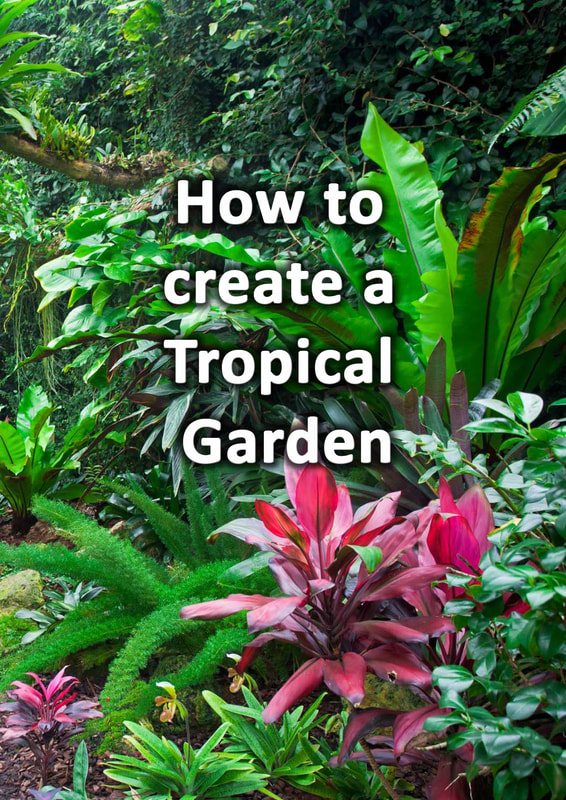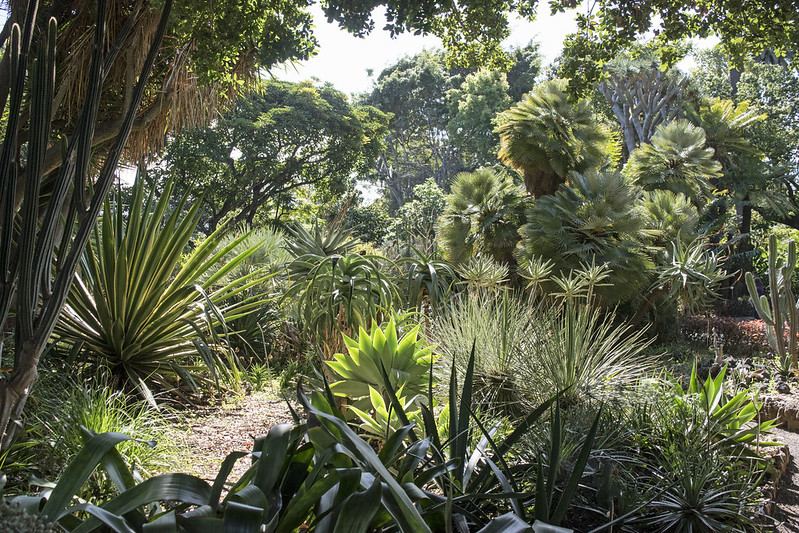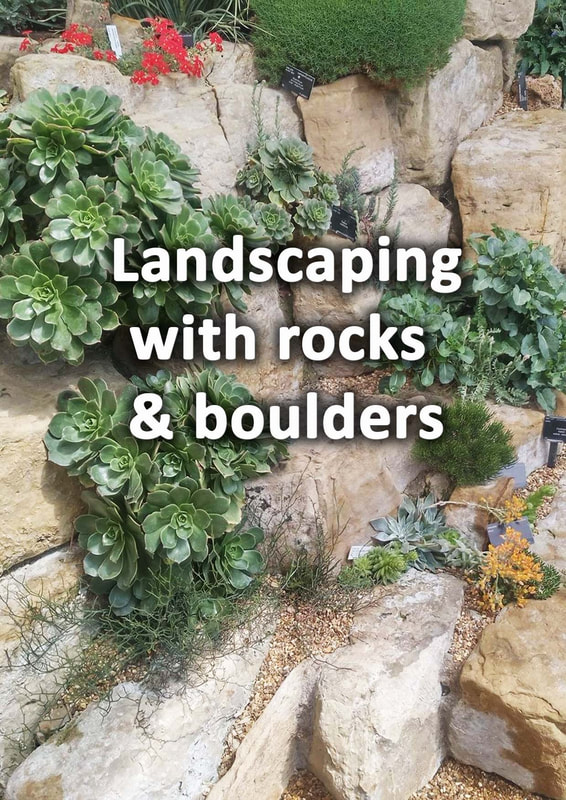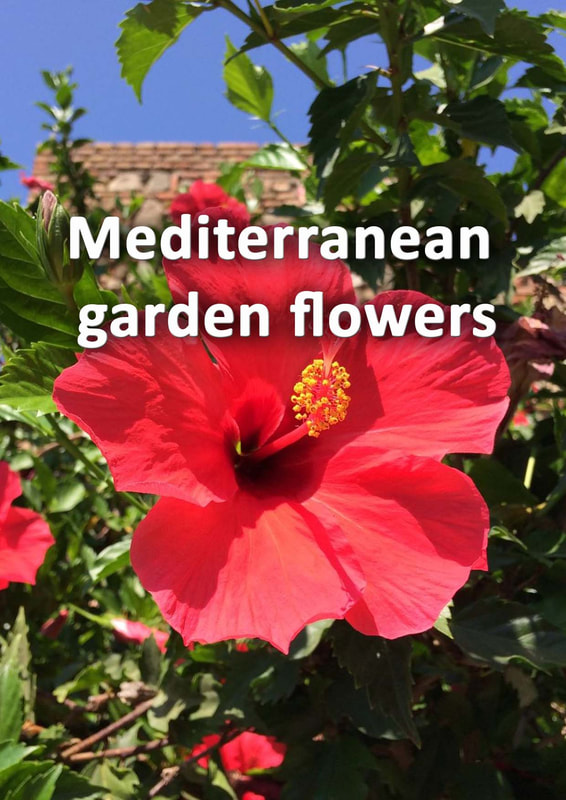|
This article contains affiliate links
Tropical or jungle gardens are an exciting way to landscape your garden. There is no better way to create a lush, green and exotic space which your friends and family will love. Tropical gardens are surprisingly easy to implement in a whole range of climates including cooler ones.
Tropical gardens evoke the feeling of being enshrouded by a tropical jungle. With a combination of lush, green, bold foliage, dazzling colour, enclosure and focal points tropical gardens are the ultimate wow factor. If you have ever visited a tropical region of the world on holiday it is easy to be inspired! Tropical environments with their abundant wildlife, warmth and greenery bring us as close to paradise as possible. If you want to know how to make a tropical garden there are a few things you will need to consider. Depending on where you live and how you want to use your garden your tropical gardens design could vary. It is important to take some time planning your approach before you start landscaping. This will save you time and money in the long run. Why create a tropical garden?
Not only do tropical gardens evoke a feeling of warmth and exotic holidays they also surround us in nature. As tropical gardens typically replicate the beauty of dense jungles they provide an escapism which other garden styles simply cannot. This allows you to journey to another world right on your doorstep. In a stressful world surrounded by concrete and flashing images tropical gardens give us a place to socialise, relax and even meditate.
Tropical gardens are evergreen and do not die down in winter. This means no matter what the season we can always get our fix of greenery and nature. There has been much research discovering just how important green space is for our wellbeing. Tropical and jungle gardens even in colder climates allow us exposure to nature all year round. How to design a tropical garden
In realising your dream tropical garden there will need to be some key landscape design considerations first. Like any new landscaping scheme you will need to assess your gardens existing conditions.
A good understanding of your own needs, local climate, soil type and opportunities will aid your personal design process. When planning your tropical garden search for precedent images When of tropical gardens for inspiration. Make a list of all the things you would like including garden materials, features and plants. Next you will need think about how you want to use your garden. When designing any space practical functionality should always come first. One of the most important elements of function is circulation, how you move around the site. Also think about the places you will stop along the way like seating areas.
Once you have the core spatial hierarchy mapped out then you can start thinking about other features. You may want a specific palm or area for ferns. You may want to block out some bad views with tropical grasses or bamboos.
A good exercise is print out black and white images of your existing garden and sketch ideas over them. You could cut out images of tropical garden elements and overlay them on a plan of your garden. Designing a tropical garden can be challenging at first but the process should be fun! If you reach a mental block leave the drawing board for a day and come back to it. Why not visit a public tropical garden for a weekend for inspiration? In the UK for example the glasshouse at Kew Gardens or The Eden Project could give you ideas. Remember good planning and research in the beginning will save you time and money later on. When you have a general layout decided start planning detailed elements such as features and planting. Climate
When planning a tropical or jungle garden your local climate will be quite a big influence on what you can grow. Obviously the closer to the equator the easier it will be for you to replicate a tropical environment. This is particularly so in the case of plants. If you live in a temperate or colder climate growing tropical plants may be more challenging. With good planning however warmer loving plants can be brought inside or under cover during the winter months.
If you live within a more urban area in colder countries you could benefit from microclimate. A combination of the heat island effect and reflective properties of buildings will make it easier to grow warm loving plants in cooler countries. It is important to point out however that a colder climate will not stop you growing ‘tropical looking’ plants. These are plants from cold climates that due to growth habit, foliage and flowers look tropical but aren’t. These plants usually have large leaves and architectural form typical of warmer climates. If you want a full list of these tropical looking plants for cooler climates check out our article below. 50 Tropical plants for a temperate climate. Some countries have land masses which span both cooler and tropical climates. Countries like China, Australia, Japan and Chile all have such climatic transitional land masses. This has led to the evolution of some tropical plants like palms, Bamboos and even bananas to tolerate much cooler temperatures. Aspect
One of the features of tropical environments is plant communities all compete to reach the suns light. This leads to large plants with bold foliage. If you live in a climate which is closer to the equator the sun light is strong enough to help understory plants grow even in the shade. If you are in a cooler climate however direct sunlight will become more important to your tropical garden.
Not only will sunlight help your plants to grow it will also make your garden warmer. This will be crucial for both the plants and your enjoyment of the space. Aspect therefore is always an important factor when creating a tropical garden. Assess your levels of sunlight during different times of the day. Is your garden south facing? Do large trees cast shade? It’s important that specific pants get their optimum amount of sunlight during the day to grow at their best. Some tropical looking plants actually thrive in shade. Plants like ferns and Hosta’s are ideal for cooler shady areas. Shelter
One of the most important factors you should think about when making a tropical garden is shelter. Tropical looking plants typically have large soft leaves which can become easily damaged in high winds. In a natural jungle environment the multiple forest canopies provide a lot of shelter from strong winds.
Therefore to replicate a tropical theme it is best to choose a sheltered site. If your garden is quite exposed to strong wings you can add extra shelter by planting hedges or erecting higher fences. In colder climates shelter is particularly important as tropical plants can easily be lost in cold weather. Soil
In a real tropical rainforest soils can be shallow and nutrient poor. However tropical plants are extremely hungry for nutrients and require good fertility. In a real jungle a vibrant ecosystem allows many nutrients to be recycled quickly.
Plants, animals, insects, fungi and bacteria all work together to retain nutrients even though the soil is shallow. In a garden setting this ecosystem is almost impossible to replicate and most tropical plants like rich well drained soil. If you are creating a tropical garden you should aim to have deep soil full of well rotted, organic matter. To promote soil life and help retain moisture mulching deeply with bark chippings will be beneficial. Hard landscaping
When it comes to hard landscaping within tropical gardens you have really many options. Most paving types will suit a jungle theme but light coloured natural stone works very well. Rustic paving that looks fragmented can look very effective with ferns and creeping plants encroaching over the surface.
Vertical surfaces and walls can benefit from climbers and green wall systems especially next to shady patios. Dry stone walls and gabions work very well in tropical gardens. Small plants can be planted in crevices to mimic the way tropical plants take hold in every nook and cranny. Visual textures
Tropical gardens are renowned for their diverse shapes and textures. Coarse palm like leaves, fountains of cascading greens and explosions of colour make them a feast for the senses. Jungle gardens also provoke images of stony river beds and ancient ruins protruding from misty hillsides.
Hence when making tropical gardens try to create as much visual texture as possible. This can be achieved by using varying surfaces from loose gravels to pavers and decks. Try to mix foliage types in your planting design to create as much contrast and juxtaposition as possible. Boulders
Rocks and boulders are perfect accompaniments to tropical gardens. Jungles around the world are famous for their excessive amounts of rainfall. Tropical forests are riddled with river systems littered with boulders, rocky banks and gravel beds.
This makes implementing boulders in your tropical landscaping a real delight. Boulders and tropical planting work really well together especially if there are plants clambering over them. Boulders can be a great accompaniment to standing water contrasting both hard and soft natural elements. Water
Every tropical garden should have water included within the design in some way. Tropical forests are renowned for their water courses and waterfalls. This makes moving water a great feature especially if it creates sound.
In the most elaborate cases waterfalls can effectively implemented between two standing ponds. However this effect can still be replicated with simple water features in specific locations. Standing water can be included in the form of small and large ponds as well as bird baths. The involvement of water can add reflection and generally excite the senses enhancing the exotic experience as a whole. Focal points
Dense, lush, tropical foliage is perfect for concealing and celebrating focal points around the garden. Focal points such as iconic statues such as Buddha can be placed upon miniature shines and grottos.
These can be combined with water features to create special hierarchy within the jungle. This is also the case with sculpture and landscape lighting. Focal points can also include magnificent tropical plants like banana palms and tree ferns. Enclosure
One of the most familiar effects created by tropical gardens is the sense of enclosure created by dense vegetation. This enclosure can be especially welcome in a highly urban garden that is overlooked by numerous buildings.
This dense vegetation can not only create privacy but can reduce noise pollution. This can make dense, tropical gardens the perfect place to get some peace and quiet. Being surrounded by green walls of vegetation can also have positive effects on mental health especially within towns and cities. The leaves of plants have been shown to also help clean the air and produce oxygen. This makes the enclosure of tropical gardens good for your health as well as looking amazing. Planting
When it comes down to it the element which holds the most responsibility for creating a tropical garden is the planting. The classic tropical look of large leaves, palms and dense foliage give the classic feel you are in a jungle.
Therefore understanding how to use planting types within your garden is essential. As discussed earlier you do not need a hot climate to create a tropical garden. You will however have to identify tropical looking plants and how to combine them to create a believable jungle paradise outside your back door. Structure
The typical structure of a tropical garden involves planting of height which creates a backdrop or feature. And example would be a boundary planted with an evergreen hedge for a lush evergreen backdrop.
Then tall palms such as bananas and yuccas can create tall features within the planting beds. These can then be surrounded with filler vegetation such as evergreen shrubs and tall grasses. Movement and extra height can be added by bamboos and grasses. Climbers and ground cover plants clamber amongst these helping to create a dense jungle of planting. Foliage
The foliage of planting within tropical gardens is very distinct. Very commonly foliage is large to capture the suns light and glossy to improve rain runoff. It is commonly the large architectural foliage of tropical gardens which make them so interesting.
This typical theme also allows you to add plants to tropical gardens which are not associated with the tropics. Hosta’s Ivys, as well as some vegetables such as rhubarb and kale also look effective in tropical gardens due to their foliage. Evergreens
One of the main differences between tropical climates and cooler climates is tropical plants do not lose their leaves during the winter months. This means if you wish to create a believable tropical garden you should incorporate evergreens.
This is obviously more important if you live within cooler climates such as Europe. When looking for suitable evergreens ones with larger, glossy leaves are best. Shrubs like laurel, Viburnum tinus and Camellia are effective examples. Climbers
Climbing plants are typical of tropical and jungle environments. Climbers creep over larger shrubs and trees seeking out the light. These can look very effective in tropical gardens clambering over pergolas and walls. Some climbers can even be used as effective ground covers in tropical gardens.
Groundcovers
Groundcover plants are a great way to fill up empty beds while at the same time keeping weeds at bay. In tropical gardens these can create that dense vegetation and extra colour at ground level. Large leaved plants such as bergenia and Hedera Colchica make perfect ground cover plants for tropical gardens.
Flowers
No tropical garden would be complete without colourful and exotic looking flowers. The great thing about tropical gardens is it doesn’t really matter what flowers you choose as long as they are vibrant. This particularly useful if you are in a cooler climate and need to utilise hardy flowers. Flowers can be included by planting certain trees, shrubs, perennials and even exotic looking annuals.
Fragrance
Fragrance can add that little bit extra excitement for your senses. Many tropical flowering plants give off beautiful fragrances to attract insects to their flowers. Adding pleasant smelling flowers to your tropical garden adds another authentic element which indulges your senses.
Seasonal interest
As most tropical gardens fit a lot into a small space it is crucial to add as much seasonal interest as possible. This is even more so important for the cold climate tropical garden. During the winter when palms and exotic perennials are in the greenhouse it is good to have some winter and spring colour. This can be achieved by using bulbs and winter flowering climbers and shrubs.
Pots
Tropical gardens are famous for their dense vegetation and cluttered appearance. Most gardens however are not always completely soil and do have areas of hard standing. Pots are great way of adding extra foliage and flowers to the patio or areas with little topsoil.
This is particularity useful for adding more exotic plants if you have winter frosts potted tropical plants can be brought inside for the winter. Hanging pots and baskets can also be planted with trailing plants to enhance a tropical look. Wildlife
One of the best things about tropical, jungle environments is they are alive with animals and birdlife. The sight and sounds of insect’s birds and other wildlife makes a tropical garden come to life. Hence it is always recommended to try and include as much wildlife habitat as possible.
Ponds, log piles and dense plant communities can provide food, water and shelter for local garden wildlife. It is also a good idea to implement bird boxes, insect hotels and bird feeders. This will make your tropical garden not only a paradise for you but for local wildlife also. Enhancing your tropical garden
When you create your tropical garden you will discover that this is just the beginning of the process. As your garden establishes you will find some plants thrive and others may not do so well.
You may decide to keep some less hardy tropical plants in your garden during the summer and bring them inside in winter. The beauty of jungle themed gardens is they constantly evolve and once established will give you a lush, green and tranquil space to enjoy all year long. To add some extra Topical atmosphere to your garden why not install some outside speakers? You can link them to your smart phone via Bluetooth and play extended recordings from deep in the jungle. Such audio recordings are readily available on Youtube. This is particularly effective when friends and family come to visit your exotic paradise garden retreat!
For further reading and great ideas for your tropical garden discover 'Tropical gardens Hidden Exotic Paradises' by Manuela Roth available on Amazon here.
If you need assistance in designing or building a tropical garden please do not hesitate to contact us. If you are planning to build your tropical garden yourself why not check out our resource page and recommended landscaping tools article here.
Some of our typical, local project locations include; Amersham, Aylesbury, Beaconsfield, Berkhamsted, Chalfont, Chesham, Gerard's Cross, Great Missenden, High Wycombe, Princes Risborough and Wendover.
4 Comments
Kay Ryder
4/12/2021 02:48:40 am
This is a wonderfully helpful article, thank you!
Reply
3/19/2022 11:45:11 am
Thank you for taking the time to read it and comment
Reply
11/9/2023 10:51:32 am
They are not particularly neat and tidy or amazingly stable but banks can be a cost effective solution for terraces. Do not expect any prizes for landscape design but banked soil can be made to look more acceptable.
Reply
Leave a Reply. |
The Author
|
Landscaping services across Buckinghamshire, Amersham, Aylesbury & High Wycombe
Hyde Heath, Amersham, Buckinghamshire |
|


































